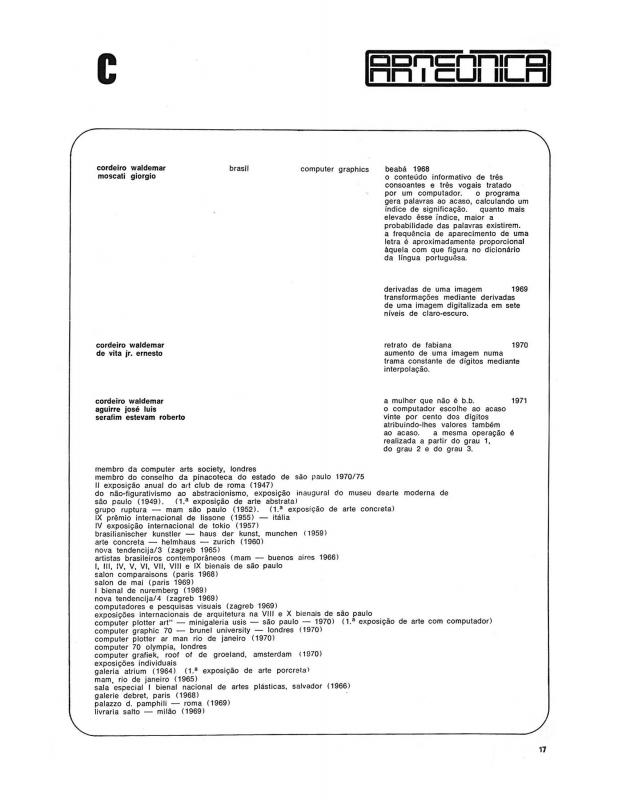After having been an active participant in the Concrete art movement in the fifties, artist Waldemar Cordeiro (1925–1973) asserts his interest in new figuration understood as “semantic Concrete art” [see the introduction to a show of Cordeiro’s work written in 1964 by German philosopher Max Bense (1910–1990) and translated from German to Portuguese by Haroldo de Campos (ICAA digital archive doc no. 1110838), as well as the text by Cordeiro on the VII São Paulo Biennial (doc no. 1110842)]. Starting in those years, Cordeiro began to develop the objects that poet Augusto de Campos (b. 1931) would call “Popcretos.”
With this text written in September 1964, Cordeiro presented his solo exhibition at the Galeria Atrium in São Paulo held in December of that year. Over the course of his life, Cordeiro made countless conceptual contributions to art and its development. As is evident in his essays “Arteônica” (doc. no. 1110836) and “Computer plotter art - primeira mostra na América Latina” (doc. no. 1110487), Cordeiro’s idea of “the concrete” underwent a radical transformation in the seventies pursuant to the use of electronic elements (computers and plotters).
The combative painter, designer, landscape artist, and art critic Waldemar Cordeiro came to Brazil from his native Rome after World War II. Starting in the late forties, he wrote for the Brazilian press. The text “O objeto” (doc. no. 1086891) is paradigmatic of the ideas he defended during that time of intense clashes in the sphere of art in Brazil. On the basis of the self-referential nature of the idea of “the concrete”—a conception of art as a real and absolutely autonomous object—Cordeiro triggered a wide range of discussions and debates with artists and critics of the time, among them poet, journalist, and art critic [José Ribamar] Ferreira Gullar (b. 1930) who defended the subjective facet of art. Ferreira Gullar’s “Teoria do não-objeto” (doc. no. 1091374) was pertinent to what would later become the Rio de Janeiro-based Neo-Concrete movement.





